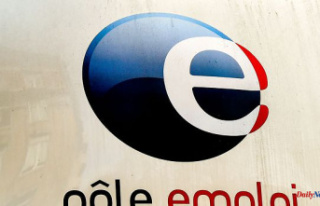Sure, the premiere of the Renault Twingo in October 1992 at the Paris Salon was a real show, because such a small car as the Twingo hadn't existed for a long time. Its one-box design by Patrick le Quement was unique and the interior construction was spectacular and simple at the same time. A legitimate successor to the Renault 4, but unusually modern, if not futuristic, for its time. And then that irresistible look, because his headlight eyes radiated so much sympathy for the environment that there hadn't been since the VW Beetle. According to the design, its name Twingo should stand for a mixture of small car and van. The concept worked, because up until 2007 the Renault entry-level model was manufactured at the Flins-sur-Seine plant without any significant changes.
The concept of the Twingo was as simple as it was known from Renault's mass-produced models, yet it was clever and imaginative. The Twingo offered maximum space in the smallest of spaces and thus followed the specifications of the British driver Sir Alec Issigonis, who made the Mini a mobile legend. Small dimensions on the outside, plenty of space inside, maximum wheelbase (2.34 meters) and a center speedo - all the extras that you know from a classic Mini, even if those responsible at Renault didn't attach any importance to the proverbial Mini driving fun. The Renault Twingo was a comfortable small car - with the dynamic handling it was not and is not far away. The focus was not on driving dynamics, but on charm, lots of space in a small space and maximum flexibility. At 3.43 meters in length, the small car offered plenty of space. A special highlight was the rear seat bench, which could be moved lengthwise by 17 centimetres. Depending on the intended use, there was ample foot space in the rear or up to 261 liters of loading volume.
Despite its cute looks, the Twingo was a revolutionary that redefined the European small car class. As with the Mini a few decades earlier, the little Renault took the hearts of women by storm, while men found it difficult to drive because of the decidedly cute design, the bright colors and moderate performance. In Germany alone, more than 500,000 copies found their customers, while a total of around 2.4 million units rolled off the assembly line.
When the Renault Twingo, which weighed around 830 kilograms, rolled onto the European markets at the end of 1992, customers did not have many options for customization. A 1.2 liter four-cylinder naturally aspirated engine with 40 kW / 55 hp provided the drive. Apart from the variable exterior paintwork, the list of optional extras included just two items: air conditioning and a folding roof. It was only later that Twingo fans were able to order the much more powerful 1.2 16-valve engine with 55 kW / 75 PS, which was significantly more dynamic in addition to the revised basic engine, which was initially upgraded to 43 kW / 58 PS and then to 43 kW / 60 PS brought the little Frenchman. With the new engine, the top speed increased from a manageable 150 to almost 170 km/h. In special series, the Twingo was even available with six and eight cylinders and powerfully flared cheeks. Over the years, the top variant of the Twingo Initiale included equipment details such as air conditioning, navigation radio and leather interior. If you remove the headrests and fold down the seats, you have a more or less flat lying surface for one or two people.
Renault has also constantly upgraded the Twingo over its 15-year life cycle, for example with an automated manual transmission, electric power steering or up to four airbags. The automated Quickshift 5 gearbox replaced the anything but convincing three-speed automatic with which the Renault Twingo could be equipped to date. The prices for a Renault Twingo of the first generation, in good condition and with a mileage of less than 70,000 kilometers, start at around 2,000 euros. A well-equipped Twingo Initiale costs less than 4,000 euros without an accident and with a low mileage, and anyone who wants an early model with a colorful paint job and the small 54 hp petrol engine can get in for less than 2,000 euros, but can get one with an H license plate from spring be on the go - if he wants. Since the maintenance costs of the Renault Twingo have always been one of the big selling points, you can drive cheaply even without an H license plate.












